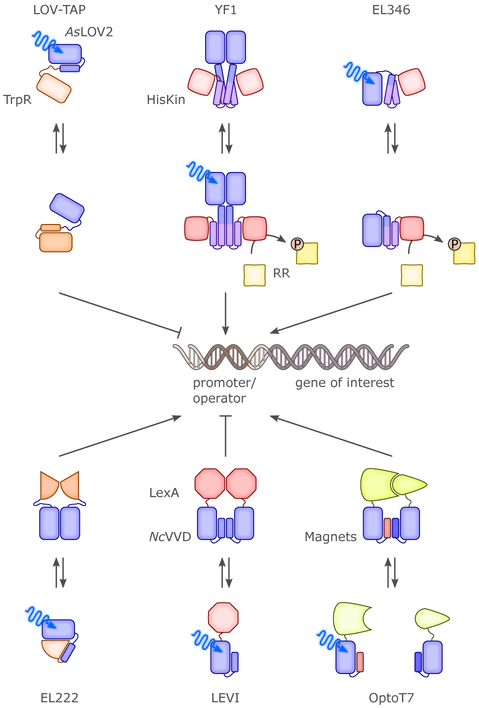Figure 7.
Several optogenetic systems achieved BL control over transcription in prokaryotes. In LOV-TAP104, the E. coll Trp repressor and the AsLOV2 were fused such that mutually exclusive folding of a shared α helix resulted; BL exposure allowed the repressor to correctly fold and bind to DNA. The homodimeric YF1105 and the monomeric EL346163 are LOV histidine kinases that phosphorylate cognate response regulators in BL-dependent manner; when phosphorylated, the response regulators bind DNA and activate transcription. In EL222,21 BL absorption by a LOV photosensor prompts dimerization and DNA binding of an associated helix-turn-helix effector, leading to transcriptional activation. The LEVI approach164 is based on the NcVivid LOV sensor; BL-induced homodimerization rescues the repressional activity of the truncated LexA repressor. Based on the Magnets system for BL-induced heterodimerization165, BL-activated split variants of the phage T7 polymerase were engineered.166,167

